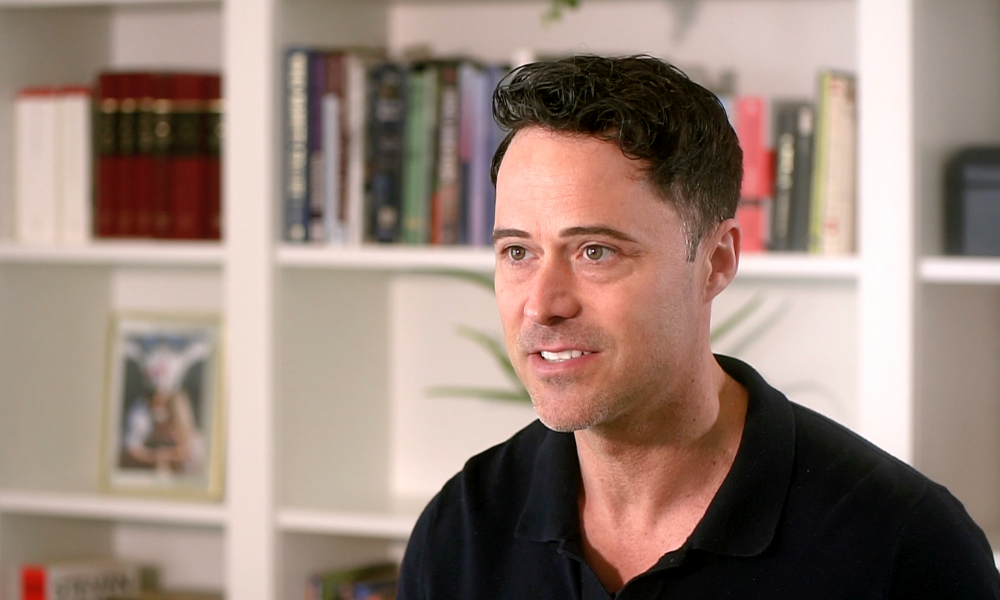Tyler Mordy, of Forstrong Global, takes inspiration from a fictitious oversized insect to explain investment metamorphosis

Sometimes, it’s tempting not to see the forest for the trees. It’s often more comfortable, as an investor, to lean on what’s worked before or to fixate on one “winning” sector. In doing so, however, you risk missing the big picture. With the curtains firmly drawn on the benign post-financial crisis era, investors are facing up to a new reality. As Tyler Mordy, CEO and CIO at Forstrong Global, puts it: “Macro is back.”
In his latest annual Super Trends series, Mordy highlights seven areas that show how macro factors, which may have been ignored over the past three decades given falling inflation and interest rates, will now play a more important role in investing. There has been a shift from the fantasy of Silicon Valley and social media start-ups to the fundamentals-led reality of infrastructure and defense, for example. Elsewhere, Russia’s invasion of Ukraine has reshaped Europe and thrown energy systems into chaos, while public exasperation with severe lockdowns finally bubbled over in China.
In analyzing the consequences of this new world order, Mordy took inspiration from Franz Kafka’s 1915 novel, The Metamorphosis, in which salesman Gregory Samsa mysteriously transforms into an oversized insect-like creature, complete with an armour-plated back and domelike brown belly. Surreal, yes, but the metaphor is prescient. Initially convinced his condition is temporary, he struggles to accept what has happened before, reluctantly, reflecting on his transformation. Like this stubborn man-turned-insect, many investors remain convinced inflation will return to its previous form via a serene descent back to the central banks’ target of 2%. Not so, according to Mordy.
“History shows that inflation, once the genie’s out of the bottle, takes a long time to return to a stable level. That's because inflation is as much of a behavioural phenomenon as a quantitative one. Central bankers may target 2%, but they're using the blunt instrument of monetary policy. When inflation gets to these types of levels it usually takes between six to 20 years before it gets back to something that's more benign.”
A new era of investing is, therefore, upon us in which macro once again commands an important role in the investment process across all asset classes. And just like Samsa, we’re going through a metamorphosis which, ultimately, requires a level of acceptance if portfolios are to maximise opportunities amid the new landscape.
Mordy warned, however, that it’s easy to fall into a vortex of macro doom. We’ve had a global pandemic, then a war, so surely the next big event will be equally catastrophic. But Mordy points out that after 2008’s big downturn, investors spent the decade waiting for another global financial crisis to strike again … and it didn’t.
From an investment perspective the next big event is already happening. “The history of markets is one of miscalculated extrapolation; of mistaking lagging indicators for the leading variety,” Mordy said. It’s clear to Forstrong that the last few years have marked a definitive end to the economic placidity of the 2010s and that today’s conditions are barely recognizable from the features of sluggish growth and low inflation that dominated the past decade.
Mordy explained: “Investors should remember that major bear markets, like the one in 2022, always signal a change in investment trend. The real danger lies in investor complacency — refusing to change portfolio strategy to align with the new macro fundamentals. The bias for many may be to run back into the investment trends that worked in the past decade. But if those macroeconomic trends of the last decade have been punctured, then it would be highly unusual for leadership not to change as well.”
Silicon Valley is emblematic of this change. As the cost of capital has risen, so funding growth stories has become less appealing. California dreamin’ is now reelin’ and the hangover from this has other macro implications. Where money previously got sucked into tech start-ups, for example, the real economy - the likes of engineering, mining, energy and infrastructure - was neglected. Now, exacerbated by another macro bombshell, the war in Ukraine, money is flooding into the real economy, including the transition to net zero carbon emissions.
Mordy’s seven Super Trends are all interlinked in this manner. As the macroeconomic environment changes, so it follows that investment leadership also changes. But this requires some mental gymnastics for those who have benefited from the post-2008 economic conditions. Investors must build a new narrative, but this takes time. Many are still sticking with past winners. For example, in 2022, investors continued to pile money into the technology sector, yet success stories like international markets and commodities gained little attention.
“Investors don't yet fully believe in the new investment leadership,” Mordy said. “But this is becoming a very typical cycle. Early-stage bull markets are now appearing all over the world and we’re getting early evidence the leadership is changing but all those behavioral biases that investors bring to their favorite investments are still in the process of changing. That’s the whole thrust of metamorphosis.”
Just as Kafka wrote, Samsa has woken up to a different world. We may not look like giant insects, but a change has occurred and over time, it will be accepted. It’s time to avert your gaze from the trees and take in the whole forest. Macro’s back, baby.
To read the full article and find out the seven Super Trends, click on this link.



